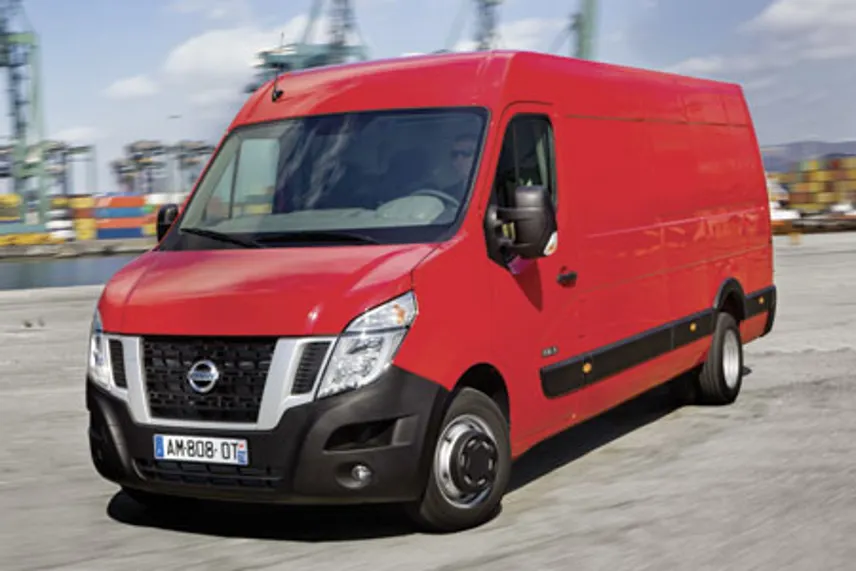Review
The new engine offers up to 22lb-ft more torque than before, despite being 200cc smaller.
The reduction in cubic capacity has no adverse effect on performance but results in improved fuel consumption, while the fitting as standard of a diesel particulate filter also helps lower emissions and ensure compliancy with Euro V regulations. The lowest CO2 figure is 195g/km.
Other benefits include a quieter engine and lower maintenance requirements – major oil change service intervals are now 25,000 miles or every two years while coolant changes are now every 100,000 miles or six years.
In addition, the unit now features a maintenance-free camshaft drive chain rather than a belt.
The vehicle warranty is a full three years.
Fuel consumption improvements mean the driver of a standard 100bhp panel van can expect a range of around 670 miles on a tank of diesel.
Behind the wheel
Nissan LCV chief Francis Bleasdale believes the NV400 is better looking than its twin brothers the Renault Master and Vauxhall Vivaro – well, he would say that wouldn’t he?
But clapping eyes on the van for the first time at our test trip to Marbella, I would have to agree with him wholeheartedly – the NV400 is an extraordinarily good looking van.
Now this fact may impress owner drivers, but we are more interested in fleet prospects, where looks mean little.
As we know, both Renault and Vauxhall have mighty powerful fleet teams working for them who are unlikely to give up their hard-earned fleet business easily, so Bleasdale has his work cut out tempting buyers away from the more traditional routes.
But a staggering 74% rise in sales in a year must mean Nissan is doing things pretty much right and the launch of this van will do nothing at all to spoil its chances of success.
It certainly is a solidly built vehicle even in short wheelbase format and all the doors are chunky, with a nice quality feel when they slam shut.
In addition to the snazzy front end, and more important in fleet terms, is the fact that there’s plenty of rubber padding at front, rear and sides to protect the vehicles from those annoying knocks and scrapes – and it’s something that a surprising number of panel vans on the reads nowadays don’t have.
Climbing aboard, the cab is a sheer delight and if I was a van driver, I’d be perfectly happy sitting in it all day long.
The driver’s seat hugs every contour of the body and the passenger seat is the same, none of your hard old slabs here.
There are cubby holes and cup holders galore, including a handy overhead storage shelf and a compartment on top of the dash which will hold a laptop computer.
We were particularly impressed with the middle passenger seat too which folds down to reveal a handy desk with a swivelling piece made especially to hold a laptop.
This can be swung round to face the driver for use when parked up and turned away again so it doesn’t impede the driver when on the road. A nice touch.
There are also three grab handles ranged across the cab and even a sunglasses case for the driver. That’s something you don’t see very often.
Verdict
Great looks, a VERY pleasing driving experience and better running costs over the old model.
All Nissan needs to do now is persuade those hard-bitten fleet buyers to at least try one of these vehicles for size.
















